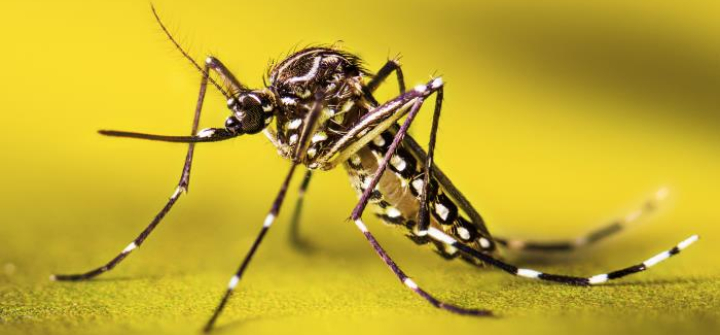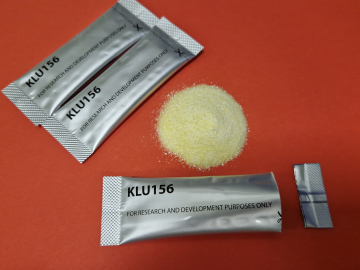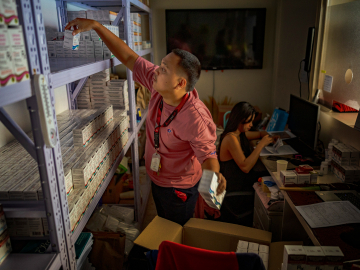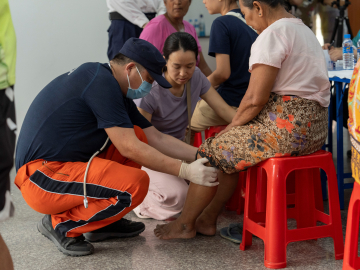World Mosquito Day 2025: A New World, Crises, and Opportunities
Anti-malaria programs, largely focused on vector control, have saved many millions of lives—albeit with recent gains now threatened—since the moment in 1897 when the India Medical Service’s Ronald Ross demonstrated that the “dapple winged mosquito” and not miasmatic “bad air” was the vehicle of malaria transmission.
Less well celebrated was U.S. Army Major Walter Reed’s demonstration three years later that another type of mosquito, and not “fomites” and poor sanitation, was the vehicle for yellow fever. This mosquito, Aedes aegypti, is also the vector for dengue, chikungunya, and Zika. It is ecologically very different and much more domestic than Anopheles malaria vectors (i.e. Aedes feed in the daytime rather than at night; breed in and around houses and urban environments; and have a very high affinity for feeding on humans). With urbanization and climate change, Aedes populations and transmission potential are rapidly expanding and now eclipsing Anopheles as our greatest mosquito challenge.
Aedes aegypti has played an enormous role in history. A 1793 yellow fever outbreak in Philadelphia, then the U.S. capital, killed an estimated 5,000 people (10% of the population); caused panic; and forced many, including President George Washington, to flee the city. Some think Aedes aegypti helped seal the deal to move the nation’s capital to Washington, D.C., in 1800.
In 2023, over 6.5 million dengue cases and 7,300 deaths were reported globally. Those figures soared to more than 14 million cases and 10,000 deaths in 2024, while the economic impact of dengue and other Aedes-borne viruses was estimated at $3.1 billion annually. While still well below the impact of malaria—the WHO estimated 263 million malaria cases and 597,000 malaria deaths in 2023—Aedes exact a heavy toll.
Yet, unlike malaria, Aedes-borne viruses draw little international donor funding—with no Global Fund, no Presidential Initiative, and except for some specialized support for Wolbachia or genetic approaches, no private foundation support. One reason is a lack of a clear return on investment. For malaria, X dollars to deploy nets and spray, drugs, and diagnostics can be expected to yield Y decrease in child mortality; for Aedes-borne diseases, the impact can be greater on family and community economics than on mortality directly. And, advances in Wolbachia and genetic approaches show promise, but are expensive, technically challenging, and difficult to scale beyond urban settings—unlike the easily deployable, “set and forget” interventions like nets and residual spraying against malaria.
Despite the dearth of donor funding, there is some optimism in stemming the growing Aedes-borne disease threat. The Asia Dengue Voice and Action Policy Working Group aims to increase the priority of dengue surveillance, prevention, treatment, case management, and control at the regional, national, and sub-national levels, efforts recently described in a white paper, Unlocking Progress: Dengue Policies and Opportunities in Asia. Specifically for prevention, the development of more scalable community-based interventions such as spatial emanators (devices that release a volatile chemical into the air to create a mosquito-repellent or mosquito-killing zone) and more targeted use of next-generation insecticides to combat resistance are equally important to continued investment in Wolbachia and genetic approaches.
Complementing our still-imperfect vector control are technical advances in artificial intelligence, surveillance, and outbreak prediction, and the use of social media and “citizen science” to support critical household and community engagement. We need, now more than ever, a new generation of public health field entomologists—grounded in these new technologies as well as ecology, biology, and community engagement—to guide malaria and dengue control efforts.
August 20 marks the first World Mosquito Day since the foreign assistance crisis that is setting back, possibly by decades, our recent advances against malaria. In this new era of diminished international support, we need to break down the traditional silos of malaria and dengue funding and infrastructure. Governments, municipalities, and the private sector, including the tourism sector, need to recognize the enormous economic burden of dengue along with malaria and work together with an all-society, bottom-up approach to realize the positive ROI for control.
A new world and new funding reality have been forced on us. Like Ross and Reed more than a century ago, we need to break with the past and seize opportunities for our future approaches to malaria, dengue and other Aedes-borne diseases.
Michael B. Macdonald, ScD, is a public health entomologist in Catonsville, Maryland.
Join the 50,000+ subscribers in 170+ countries who rely on Global Health NOW summaries and exclusive articles for the latest public health news. Sign up for our free weekday newsletter, and please share the link with friends and colleagues.
A resting female Aedes aegypti mosquito. Image: CDC/ Amy E. Lockwood, MS




